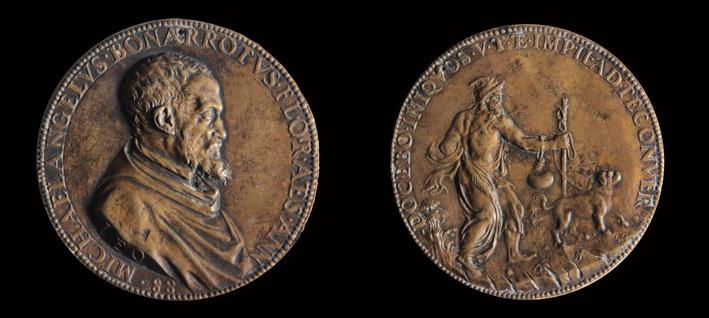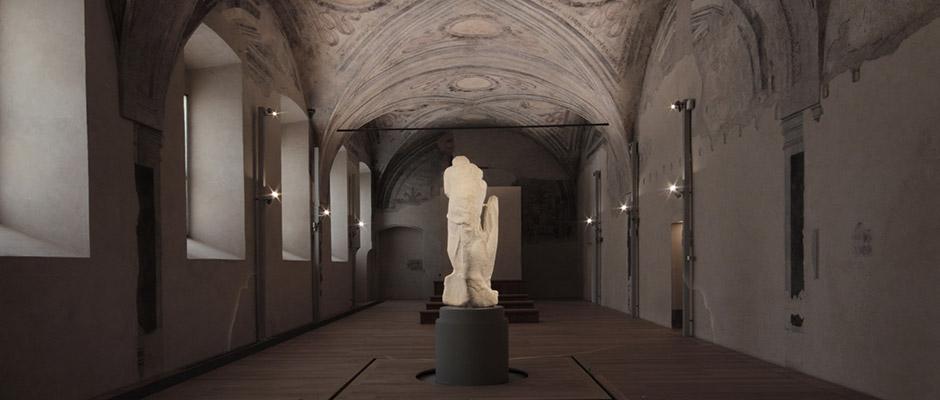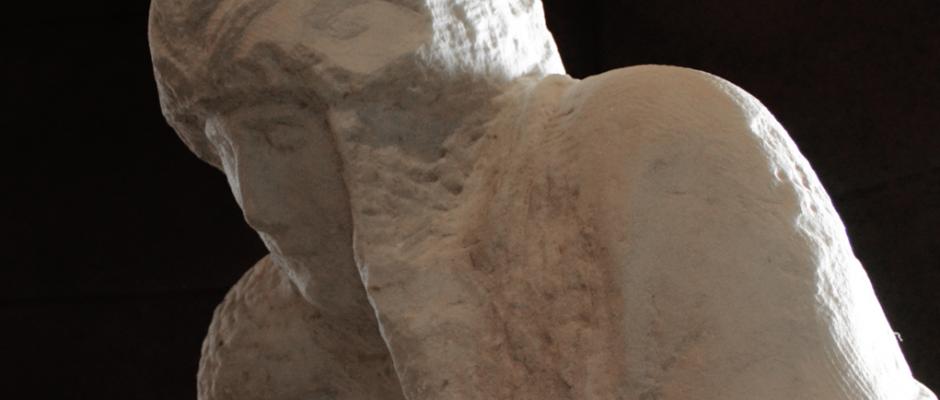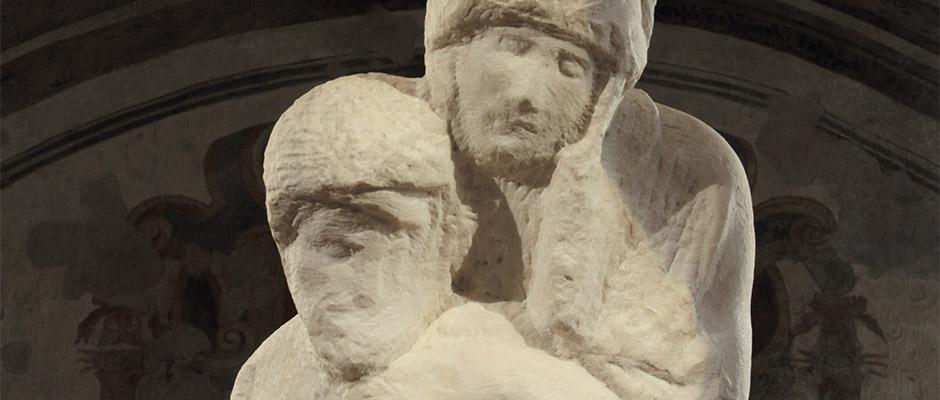The Sforza Castle and the Museum of Rondanini Pietà
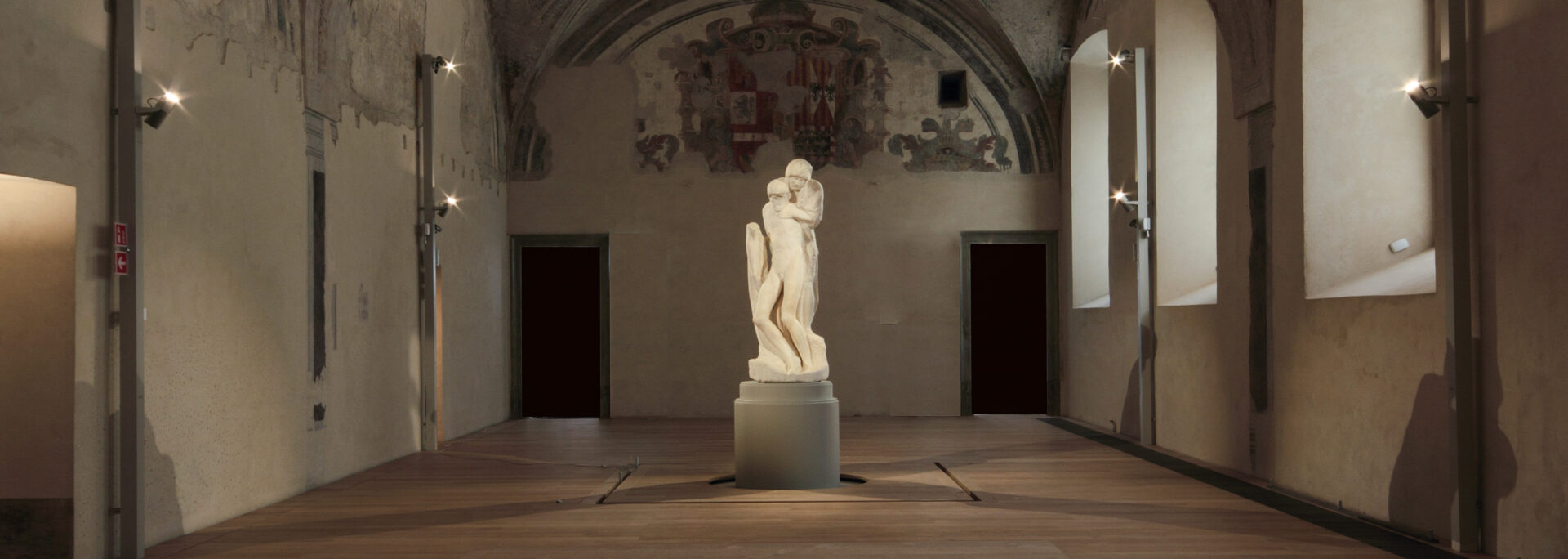
The Museum of Rondanini Pietà is the most recent one among the Castle collections: it was created and opened in 2015 after architect Michele De Lucchi’s project who meant to give the most adequate location to the last famous artwork by Michelangelo, purchased by Comune di Milano in 1952 and kept since 1956 in a niche inside the Scarlioni Hall at Museum of Ancient Art behind a grey sandstone designed by BBPR studio. The present location at Spanish Hospital, originally created as a relief area for ill and wounded soldiers during Spanish regency, was chosen for its 16th century details and original frescoes. In the hall other artworks are shown that make the visitor feel more confident with Michelangelo’s physical appearance, that is a bronze head portrait and two bronze coins featuring his bust.
Given the present context, the Ospedale and the Pietà together favour meditation and contemplation.
Visiting Pietà Rondanini can be a very interesting and easy experience for people with intellectual disabilities, since it develops in just one hall, where they’re asked to pay attention to just one artwork.
From the Arms Courtyard you enter a large, well-lit hall, with shaded windows and a diffuse lighting system that prevents dark corners. There are benches facing the Pietà, the only focus point there.
The only warnings for visitors are related to sensory aspects: this Hospital wing of the Castle is located over the underground line, which means that from time to time its noise can be perceived together with background religious music in the hall itself. Artificial lights are focused on Michelangelo’s statue, recently restored and whose details are clearly defined and visible notwithstanding its un-finished nature. The central setting allows visitors to walk around the statue to grasp every single detail. The only condition that might change is the number of visitors, being the statue a very famous artwork, isolated from the other museums in the Castle. In some opening times you might find many people queuing at the ticket office.
The Museo per tutti guide, with its special section on Pietà, gives the visitors with intellectual disabilities the opportunity to approach a majestic piece of art history on an accessibility and inclusion basis, as all masterpieces should be guaranteed to be given.

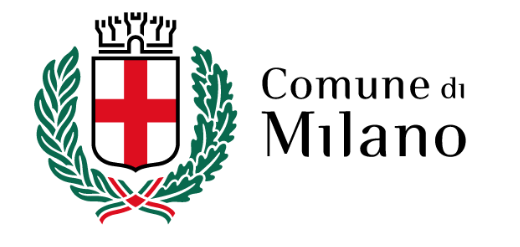

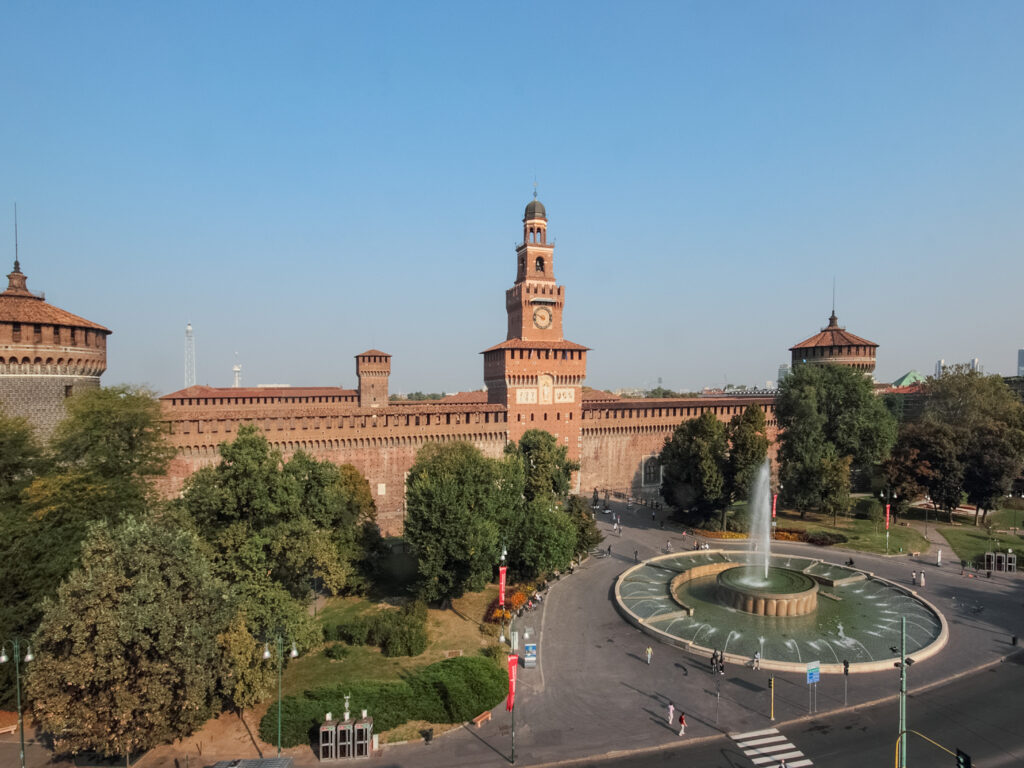
 Accessible toilets
Accessible toilets
 Cloakroom
Cloakroom

